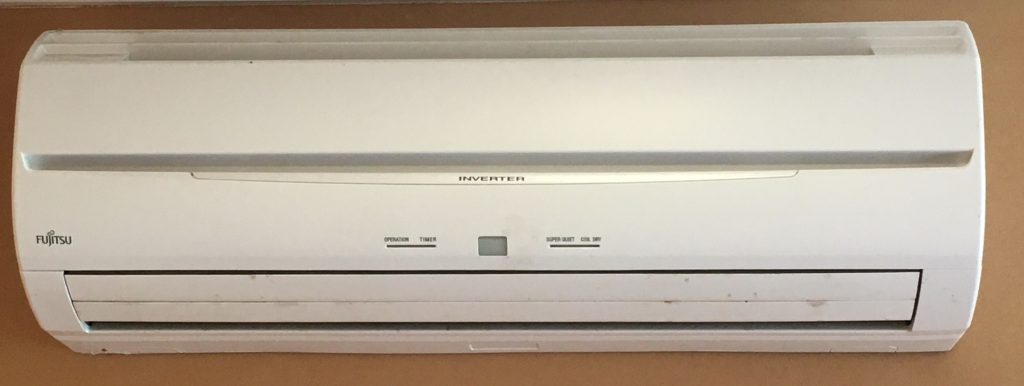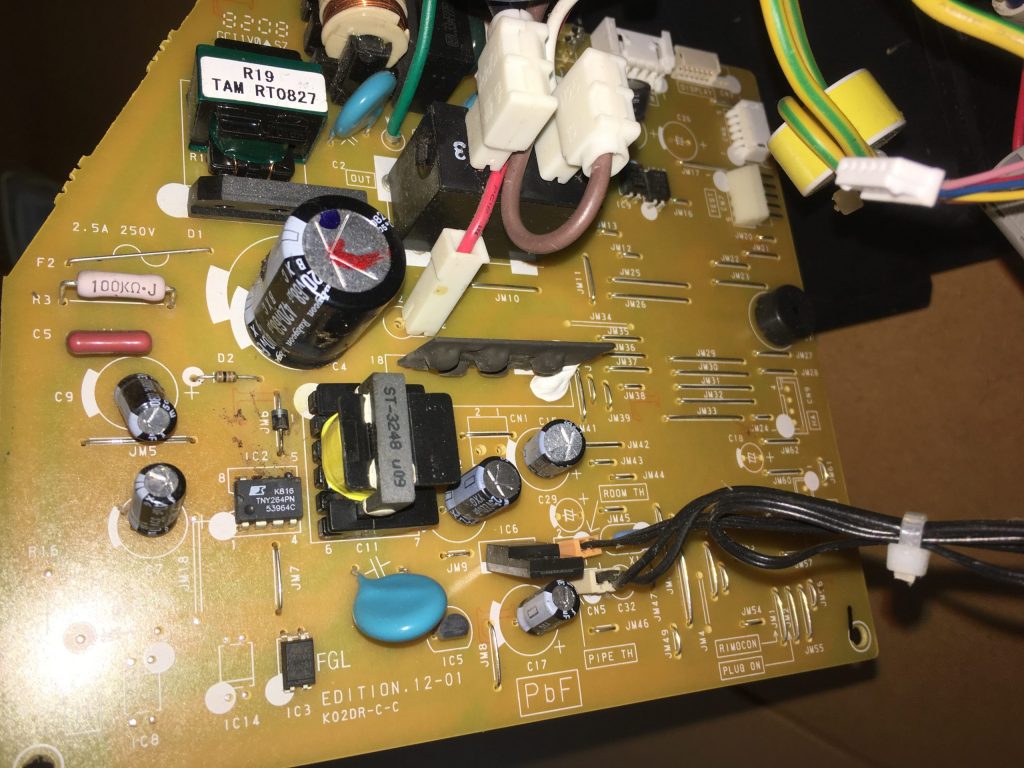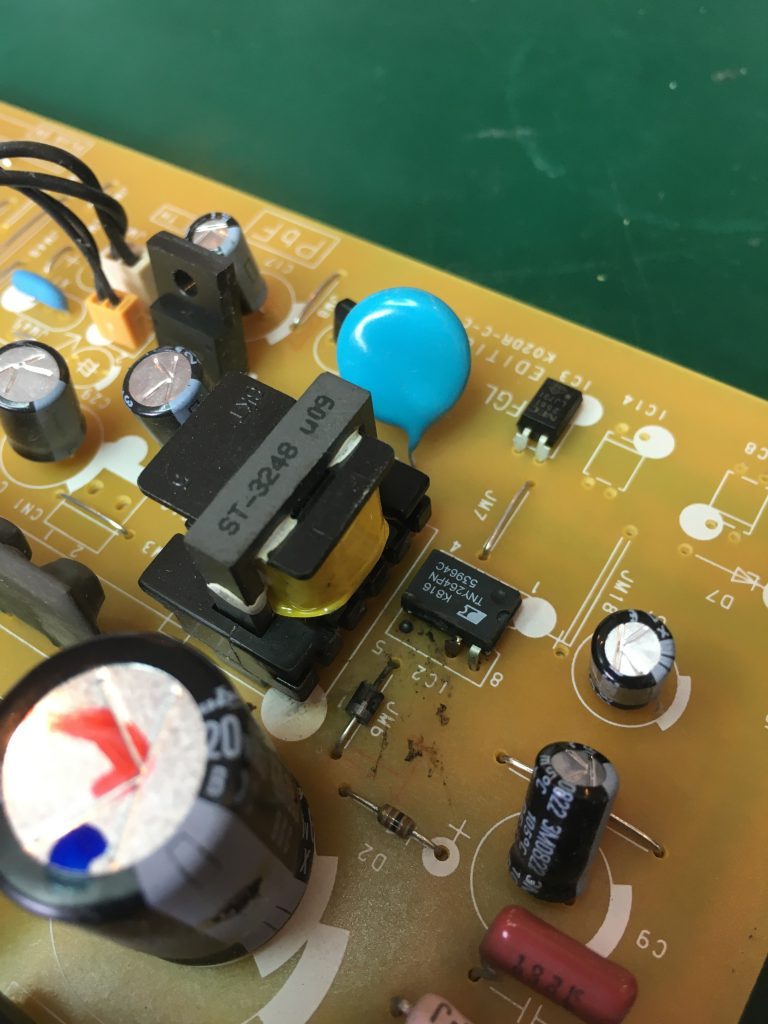
I’ve got a Futijsu Air Conditioner in my office which decided not to turn on when we hit the coldest part of year 🙁
When operating normally, the unit would beep and the ‘Operation’ indicator light would turn red as soon as the remote tried to turn the unit on, but on this cold morning nothing happened.
In this past I’ve had the fuse blow so after checking the fuse was OK, I checked the outside condenser unit for dead animals which normally try to crawl up the wiring and short out the wires – but no remains this time! I checked for power on the outside unit and there was nothing. There was power going to the inside unit, and a quick trace of the cables shows the inside unit controls the power feed to the outside unit. This indicated an issue with the inside unit.
After prying and pulling and unscrewing every screw I could find (one was at the rear of the unit which I had to blindly unscrew), I managed to remove the outer case and with some more prying an pulling I managed to get to the main control PCB.

I did a quick search on the internet to see if there were any of these boards (K02DR-C-C) available, a few items came up, one on Aliexpress for NZ$133, one for US$26.56 on yoycart.com which I haven’t heard of before. So I thought I’d check the board and quickly noticed IC2 had suffered a high current event. IC2 was a TNY264PN which according to the datasheet is a power supply controller which includes a MOSFET used for switching in the AC to DC conversion power circuit. Pin 5 (Drain pin) had been melted away.

Checking other components around this IC, everything else seemed the be normal. I noticed some foreign material burnt onto the electrolytic capacitor (C4) so I’m guessing some little insect was trying to find a warm place to live and shorted Pins 7 and Pin 5 making short work of both the insect and Pin 5.
A replacement IC was ordered initially from AliExpress but due to the slow delivery time (I’m too cheap to pay for DHL) it was 4 weeks later and still no replacement chip. I had some other parts for another project to get so ordered a replacement from Digi-Key (US$0.96) and less than 7 days later the replacement IC arrived, the faulty IC was removed and a new one installed. With anticipation and only 2 screws left over, power was turned on, the remote pressed, the unit beeped, the Operation LED was RED, and the vents opened – all fixed for less than US$1.
